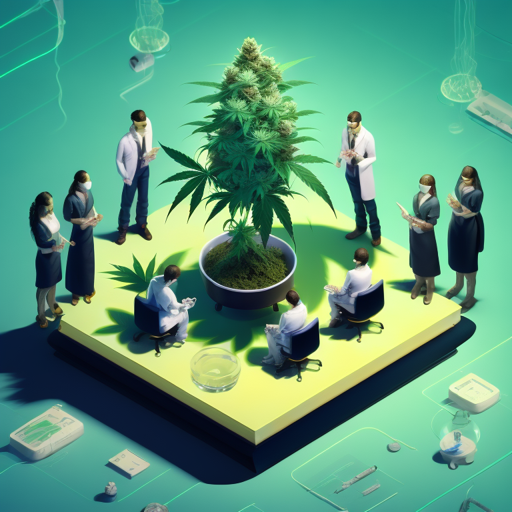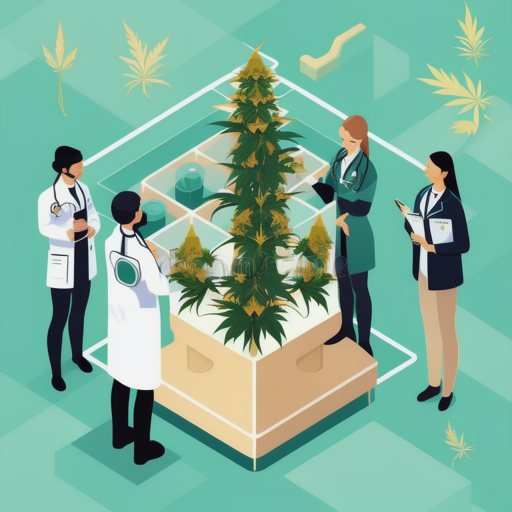Unveiling the Rich History of Cannabis in China

Dive into the captivating world of cannabis as we embark on a historical journey through China’s profound relationship with this remarkable plant. In this extensively researched blog post, we explore the multifaceted history of cannabis in China. From ancient origins to its resurgence in modern medicine, we uncover its cultural significance, medicinal applications, and the evolving landscape surrounding its use. Ancient Origins: A Legacy Rooted in Tradition Cannabis cultivation in China dates back thousands of years, with archeological evidence suggesting its use as early as the Neolithic period. The plant, known as “da ma” (大妈) or “má” (嘛) played a central role in Chinese society. It was cultivated for its versatile fibres, which were transformed into textiles, ropes, and paper, supporting the development of ancient Chinese civilisation. Historical Medicinal Practices: Honouring the Wisdom of Traditional Chinese Medicine (TCM) Cannabis holds a revered place in Traditional Chinese Medicine (TCM), a holistic healing system that has been practiced for centuries. Ancient Chinese medical texts, such as the “Shennong Ben Cao Jing” from around 100 AD, document the therapeutic properties of cannabis. It was utilised to address a range of ailments, including pain, inflammation, malaria, and gynaecological disorders, showcasing the extensive knowledge of herbal medicine in ancient China. Taoist Philosophy: Cannabis as a Path to Spiritual Enlightenment Taoism, a profound philosophical and religious tradition, embraced the spiritual aspects of cannabis. Within the teachings of Taoist philosophy, cannabis was believed to enhance meditation, perception, and communication with the divine. Notably, the “Baopuzi” (抱朴子) a text authored by Ge Hong during the Jin dynasty, details the ritualistic use of cannabis for transcendent experiences and spiritual enlightenment. Literature and Art: Cannabis in China as an Inspiration for Creativity Throughout Chinese history, cannabis found its way into literature and art, serving as a muse for creativity. Esteemed poets, such as Li Bai from the Tang dynasty, celebrated the plant’s intoxicating effects in their works, elevating cannabis as a symbol of transcendence and poetic inspiration. The profound influence of cannabis on Chinese literature is a testament to its cultural significance and enduring allure. Prohibition and Recent Developments: Navigating Changing Tides In the 20th century, China implemented strict drug control policies, leading to the prohibition of cannabis. However, recent years have witnessed a renewed focus on cannabis, specifically its medicinal potential. The Chinese government has initiated research and development projects exploring cannabis-based pharmaceuticals, with a particular emphasis on cannabidiol (CBD), a non-psychoactive compound of the plant. Conclusion: Delving into the rich history of cannabis in China unveils its enduring significance in various aspects of Chinese culture. From its ancient origins as a versatile resource to its integral role in traditional medicine and spiritual practices, cannabis has left an indelible mark on Chinese society. As medical cannabis patients in the UK, exploring the historical context and cultural significance of cannabis in China can deepen our understanding of this remarkable plant’s potential benefits. Sources: 1. “Cannabis in Chinese Medicine: Are Some Traditional Indications Referenced in Ancient Literature Related to Cannabinoids?” – Journal of Ethnopharmacology 2. “Cannabis in Chinese Medicine: Are Some Traditional Indications Referenced in Ancient Literature Related to Cannabinoids?” – ResearchGate 3. “Cannabis in Chinese Medicine” – The Botanical Source 4. “The History of Cannabis in China: An Ancient Plant with Many Uses” – The Third Wave Disclaimer: This blog post is for informational purposes only and should not be considered medical advice. Consult with healthcare professionals before using cannabis for medicinal purposes, and adhere to the regulations and guidelines set by the relevant authorities.
Ancient Roots of Cannabis in India

Introduction Welcome back to our “History of Cannabis” series on the Sanskara website. In this instalment, we explore the ancient roots of cannabis in India, shedding light on its historical significance and cultural associations. As medical cannabis patients in the UK, understanding the rich heritage of this plant provides valuable insights into its historical uses and potential benefits. Ancient India: A Hub of Cannabis Usage Ancient India holds a prominent place in cannabis history, with references to its usage dating back thousands of years. Cannabis, known as “ganja” or “bhang,” played diverse roles in Indian society, encompassing religious, medicinal, and cultural dimensions. Religious Significance Cannabis held a sacred status in ancient Indian religious traditions. The Vedas, ancient Hindu scriptures, mention ceremonial cannabis use in religious rituals. It was believed to facilitate spiritual experiences, meditation, and divine connection. (1) Medicinal Applications Ayurveda, the ancient Indian holistic healing system, recognised cannabis’ therapeutic properties. Ayurvedic texts mention cannabis use for pain relief, inflammation, digestive disorders, and neurological conditions. (2) Cultural Practices Cannabis intertwined with various cultural practices in ancient India. The preparation of “bhang,” a cannabis-infused drink, became popular during festivities like Holi. Bhang induced joy, celebration, and communal bonding. (3) Continued Influence The historical significance of cannabis in ancient India resonates even today. Spiritual and cultural associations with cannabis persist among communities, including the Sadhus (holy men) in India, who incorporate cannabis into their spiritual practices. Conclusion The ancient roots of cannabis in India reveal a rich tapestry of religious, medicinal, and cultural significance. Its use spanned millennia, leaving an indelible mark on Indian society. As medical cannabis patients in the UK, exploring the historical context of cannabis in India allows us to appreciate its diverse properties and potential benefits. Join us for the next instalment in our “History of Cannabis” series as we continue to explore the cultural connections and historical use of cannabis worldwide. Disclaimer: The information provided in this blog post is for educational purposes only and does not constitute medical advice. Patients should consult healthcare professionals before using cannabis for medicinal purposes, following regulations and guidelines set by UK authorities. Sources: “Cannabis in Ancient Indian Religion and Society” by N. R. Madhusudana Reddy (Journal of Psychoactive Drugs, 1980) “Cannabis in Ayurveda: The Ancient Science of Healing and Medicine” by P. S. Rajput (International Journal of Green Pharmacy, 2013) “Bhang: A Historical and Cultural Perspective” by A. G. Khan (The British Journal of Psychiatry, 2004)
Exploring the Historical Significance of Cannabis in Islamic Culture – Uncover cannabis in Islamic culture: history, uses, perspectives

Uncover cannabis in Islamic culture, history, uses & perspectives
What is Medical Cannabis

Cannabis Based Medical Products (CBMPs) or Medical Cannabis are medications derived from the cannabis plant
Water Activity: A Guide for Medical Cannabis Producers

Introduction As the global demand for medical cannabis continues to surge, the attention to quality control measures becomes increasingly critical. One such parameter gaining prominence in the cannabis industry is water activity (aw). This blog delves into the multifaceted role of water activity, extending beyond its conventional association with edibles and food safety. Specifically, we explore its impact on microbial stability, storage stability of harvested buds and extracts, its correlation to product quality attributes, and its implications for shelf life. Additionally, we discuss its current inclusion in state regulations and emphasise the need for a holistic understanding of water activity in the cannabis industry. The Theory of Water Activity Water activity is not a novel concept but is deeply rooted in the fundamental laws of thermodynamics, as per Gibb’s free energy equation. It represents the relative chemical potential energy of water in a system, measured by the partial vapour pressure of water in a headspace at equilibrium with the sample. This comprehensive understanding helps differentiate water activity from moisture content, with water activity providing a more accurate indication of microbial, chemical, and physical stability in cannabis products. Water Activity and Microbial Safety Microbial contamination poses a significant threat to cannabis products, leading to allergic reactions, respiratory complications, or food borne illnesses. Water activity serves as a critical control point for preventing microbial contamination, dictating the ability of microorganisms to grow and reproduce. While moisture content is an extensive property related to purity, water activity is an intensive property directly influencing microbial growth limits. Establishing water activity below 0.63 aw is crucial for ensuring shelf stability, preventing the growth of pathogenic bacteria and moulds that could compromise product safety. Water Activity and Chemical Stability Water activity is not only a guardian against microbial growth but also a determinant of chemical stability in cannabis products. Processing biomass and edibles to water activities below 0.63 aw mitigates the risk of microbial spoilage but doesn’t guarantee unlimited shelf life. Chemical degradation, such as tetrahydrocannabinolic acid (THCA) loss due to decarboxylation, becomes a pertinent concern. Water activity influences reaction rates, with lower water activity correlating with minimised chemical degradation. The hygrothermal time model is a valuable tool for predicting reaction rates and establishing the ideal water activity range for maximising shelf life while minimising chemical degradation. Water Activity and Storage Stability Harvested cannabis must be adequately dried to facilitate storage and transport. Water activity below 0.63 aw is essential to prevent mould growth, particularly in dried biomass. Adequate packaging, with good moisture barrier properties, becomes imperative to preserve water activity levels during storage and transport. Water Activity and Regulations While water activity is recognised for its role in ensuring the safety and stability of cannabis products, its inclusion in state regulations varies. States like Nevada, California, Oregon, and Washington have incorporated water activity testing requirements into their regulations. Additionally, ASTM standards have been established to standardise water activity testing in the cannabis industry, emphasising its importance in maintaining product quality and safety. Conclusion In the dynamic landscape of the medical cannabis industry, water activity emerges as a versatile and indispensable parameter. Its influence extends from microbial safety to chemical stability, storage stability, and overall product quality. For medical cannabis producers eyeing the UK market, understanding and controlling water activity is not just a standard to maintain but a strategic move to ensure the longevity, safety, and efficacy of their products. As the industry continues to evolve, embracing the multifaceted significance of water activity will undoubtedly set exporters apart, fostering a reputation for excellence and reliability in the global market. References D.S. Reid, Water Activity in Foods (Blackwell Publishing and the Institute of Food Technologists, Ames, Iowa, 2007) pp. 15–28. A.J. Fontana, Water Activity in Foods (Blackwell Publishing and the Institute of Food Technologists, Ames, Iowa, 2007) pp. 155–171. M.S. Tapia, S.M. Alzamora, and J. Chirife, Water Activity in Foods (Blackwell Publishing and the Institute of Food Technologists, Ames, Iowa, 2007) pp. 239–271. L. Beuchat, J. Food Prot.46(2), 135–141 (1983). W. Scott, Adv. Food Res.7,83–127 (1957). National Cannabis Industry Association. https://thecannabisindustry.org/ncia-news-resources/state-by-state-policies/. (June 2019). H. Lueng, Water Activity: Theory and Applications to Food (Marcel Dekker, Inc., New York, New York, 1987) pp. 27–45. B.P Carter, R.M. Syamaladevi, M.T. Galloway, G.S. Campbell, and S.S. Sablani, Proceedings for the 8th Shelf Life International Meeting, U. Klinkesorn, Ed. (Bangkok, Thailand: Kasetsart University, 2017) pp. 40–45. H. Eyring, J. Chem. Phys.4, 283 (1936). The What, How, and Why of Water Activity in Cannabis. https://www.cannabissciencetech.com/view/what-how-and-why-water-activity-cannabis/ (December 2023). Water Activity And Cannabis. https://aqualab.com/en/knowledge-base/webinars/water-activity-and-cannabis/ (December 2023),
The Cannabis Plant: Nature’s Gift Unveiled

Introduction The cannabis plant, scientifically known as Cannabis sativa, has been a part of human history for millennia, revered for its versatility and medicinal properties. In this comprehensive blog, we will explore the fascinating anatomy, life cycle, pollination methods, defence mechanisms, habitats, and diverse types, shapes, and colours of the cannabis plant. Let’s embark on this journey of discovery and unravel the enigmatic world of cannabis. Anatomy of the Cannabis Plant The cannabis plant is a hardy, dioecious flowering plant, meaning it has separate male and female reproductive structures. Below is a simple table illustrating the basic anatomy of the cannabis plant: Plant Part Function Leaves Photosynthesis and transpiration Stems Support, nutrient transport, and storage Flowers (Buds) Reproductive structures containing cannabinoids Seeds Reproduction and dispersal of the species Roots Anchoring, nutrient and water absorption 1. Cola: The Cola refers to the cluster of buds at the top of the female cannabis plant. It contains high concentrations of cannabinoids, such as THC and CBD, making it a crucial component for medical cannabis production. Colas are carefully cultivated and harvested for their therapeutic properties, contributing to the medicinal benefits of the plant. 2. Sugar Leaf: Sugar Leaves are the small, sugar-coated leaves that surround the Cola and other buds. These leaves contain trichomes, which are resin-producing glands responsible for synthesising cannabinoids and terpenes. Sugar Leaves are also utilised in medical cannabis preparations due to their cannabinoid-rich content. 3. Pistil and Stigma: Pistils and Stigmas are the reproductive structures of the female cannabis plant. The Pistil consists of the Stigma, which is a hair-like structure designed to capture pollen during pollination. While cannabis growers typically remove male plants to prevent seed development, these female reproductive components play a significant role in medical cannabis production as they are rich in cannabinoids and other beneficial compounds. 4. Trichomes: Trichomes are tiny, crystal-like structures that cover the surface of cannabis plants, including the Cola and Sugar Leaves. These structures are the powerhouse of medicinal compounds, housing a majority of the cannabinoids and terpenes responsible for the therapeutic effects of medical cannabis. Trichomes are carefully preserved during harvesting to ensure maximum medicinal potency. 5. Fan Leaf: Fan Leaves are the large, fan-shaped leaves that emerge from the cannabis plant’s branches. While they contain minimal cannabinoid content, they play a crucial role in the photosynthesis process, providing the plant with the energy it needs to produce therapeutic compounds. Fan Leaves also contribute to the overall health and vigour of the medical cannabis plant. 6. Bract and Calyx: Bracts are modified leaves found at the base of each Cola, while Calyxes are small, cup-like structures that encase the cannabis seeds when pollinated. While Bracts and Calyxes have limited cannabinoid content, they are essential components for medical cannabis growers as they protect and support seed development, which is crucial for strain preservation and breeding purposes. Life Cycle of the Cannabis Plant The life cycle of the cannabis plant consists of several stages, each crucial for its survival and propagation. Let’s take a look at the key phases: Pollination Methods of the Cannabis Plant The cannabis plant has developed different strategies for pollination. The two main methods are: Defence Mechanisms of the Cannabis Plant To protect itself from predators and environmental stressors, the cannabis plant deploys various defence mechanisms. These include: Habitats of the Cannabis Plant The cannabis plant is remarkably adaptable and can thrive in diverse habitats, including: Various Types, Shapes, and Colours of Cannabis Cannabis exhibits a wide array of types, shapes, and colours, influenced by factors such as genetics, cultivation techniques, and environmental conditions. Below are some common cannabis types: Type Shape Colour Sativa Tall, slender Light green, orange, yellow Indica Short, bushy Dark green, purple Ruderalis Small and rugged Pale green Hybrids Varies depending on mix Combination of colours Conclusion The cannabis plant is a remarkable botanical wonder, with a rich history and countless applications in various fields. Understanding its anatomy, life cycle, pollination methods, defence mechanisms, habitats, and diverse characteristics can foster appreciation for this extraordinary plant. Whether it’s for medical purposes, recreational use, or industrial applications, the cannabis plant continues to intrigue and amaze humanity, reminding us of the wonders of nature. Disclaimer:This post aims to provide general information about the cannabis plant. Cultivation, possession, and use of cannabis is illegal without the correct authorisation Always abide by the laws and regulations put in place. Consult a qualified professional for personalised advice related to medical cannabis.
Dosing Guidance for Dry Herb Vaporising
Dry herb vaporising offers a precise and efficient way to consume cannabis, allowing users to experience the therapeutic benefits of cannabinoids and terpenes without the potential harms associated with smoking. To ensure a safe and enjoyable vaporising experience, it’s essential to understand the boiling points of various terpenes and cannabinoids and how they impact the effects of cannabis. Importance of Temperature ControlTemperature control is a critical aspect of dry herb vaporising, as different compounds in cannabis vaporise at specific temperatures. By adjusting the temperature, users can target specific cannabinoids and terpenes to customise their experience. Boiling Points of Common Cannabinoids Cannabinoid Boiling Point (°C) THC 157°C CBD 160-180°C CBG 52-65°C CBN 185°C CBC 220°C THCV 220°C Boiling Points of Common Terpenes Terpene Boiling Point (°C) Myrcene 167°C Limonene 176°C Pinene 155°C Linalool 198°C Caryophyllene 130°C Humulene 198°C Terpinolene 185°C Bisabolol 151°C Eucalyptol 176°C Guaiol 167°C Nerolidol 161°C Phytol 160°C Dosage and Temperature Recommendations: Cannabinoid / Terpene Temperature Range (°C) Potential Effects and Benefits THC 157°C Euphoria, Relaxation, Pain Relief CBD 160-180°C Anti-inflammatory, Anxiolytic, Anticonvulsant CBG 52-65°C Neuroprotective, Anti-inflammatory, Potential Antibacterial Effects CBN 185°C Mild Sedation, Potential Sleep Aid CBC 220°C Anti-inflammatory, Potential Antidepressant Effects THCV 220°C Potential Appetite Suppressant, Anticonvulsant Myrcene 167°C Sedating, Relaxing, Potential Anti-inflammatory Effects Limonene 176°C Uplifting, Mood-Enhancing, Potential Antioxidant Effects Pinene 155°C Alertness, Memory Enhancement, Potential Bronchodilator Linalool 198°C Calming, Stress-Reducing, Potential Analgesic Effects Caryophyllene 130°C Anti-inflammatory, Potential Gastro-protective Effects, No Psychoactive effects Humulene 198°C Anti-inflammatory, Potential Appetite Suppressant Terpinolene 185°C Uplifting, Potential Antioxidant and Anticancer Effects Bisabolol 151°C Calming, Potential Anti-inflammatory and Antioxidant Effects Eucalyptol 176°C Potential Anti-inflammatory and Analgesic Effects Guaiol 167°C Potential Anti-inflammatory and Antioxidant Effects Nerolidol 161°C Calming, Potential Sedative and Anti-fungal Effects Phytol 160°C Potential Antioxidant and Anti-inflammatory Effects Dosage RecommendationsDosage for dry herb vaporising depends on several factors, including individual tolerance, desired effects, the potency of the cannabis strain and prescriber’s guidance. Start with a low dose and gradually increase until the desired effects are achieved. Safety ConsiderationsAlways use a reputable vaporiser with accurate temperature controls to ensure precise dosing and avoid combustion. High temperatures (above 230°C) may produce harmful by-products and should be avoided. ConclusionDry herb vaporising provides a customisable and controlled method of cannabis consumption. Understanding the boiling points of cannabinoids and a wide range of terpenes allows users to fine-tune their experience and target specific effects. Start with low temperatures and dosage, gradually increasing as needed, to enjoy the full potential of cannabinoids and terpenes while minimising potential adverse effects. Disclaimer: The information provided in this context is intended for general informational purposes only and should not be construed as medical advice under any circumstances. It is essential to consult with a qualified healthcare professional or medical practitioner before making any decisions or taking any actions related to medical treatment or dosing. The content here does not replace professional medical guidance, and any reliance on the information presented is at your own risk. We strive to maintain accuracy and up-to-date information; however, we do not warrant the completeness, reliability, or validity of the information provided. Therefore, we disclaim any liability for any adverse outcomes or damages arising from the use or misuse of the information mentioned here. Always seek personalised medical advice from a licensed healthcare provider for your specific medical condition or situation.
A Comprehensive Guide to the Endocannabinoid System, Cannabinoids, Terpenes, Flavonoids, and More
IntroductionThe world of cannabis and its therapeutic potential has garnered immense attention in recent years. From the famous cannabinoids like THC and CBD to the lesser-known compounds such as terpenes and flavonoids, the cannabis plant offers a vast array of medicinal properties. In this blog post, we will delve into the fascinating world of the endocannabinoid system (ECS), explore various cannabinoids, terpenes, and flavonoids, discuss the entourage effect, types of cannabis products, the importance of Certificate of Analysis (CoAs), consumption methods, and dosing guidelines. The Endocannabinoid System (ECS)The ECS is a complex network of receptors, endocannabinoids, and enzymes that plays a crucial role in maintaining balance within our body. It helps regulate various physiological processes, such as mood, pain sensation, appetite, sleep, and immune function. CannabinoidsCannabinoids are the chemical compounds found in the cannabis plant. The two most well-known cannabinoids are THC (tetrahydrocannabinol) and CBD (cannabidiol). THC is responsible for the psychoactive effects of cannabis, while CBD offers potential therapeutic benefits without causing intoxication. Other noteworthy cannabinoids include CBG (cannabigerol), CBN (cannabinol), and CBC (cannabichromene), each with unique properties that contribute to the overall medicinal potential of cannabis. Here’s are some of the most common cannabinoids found in the cannabis plant: Cannabinoid Full Name Potential Effects and Benefits THC Tetrahydrocannabinol Psychoactive; pain relief, appetite stimulation CBD Cannabidiol Non-psychoactive; anti-inflammatory, anxiety relief CBG Cannabigerol Non-psychoactive; potential antibacterial effects CBN Cannabinol Mildly psychoactive; potential sedative effects CBC Cannabichromene Non-psychoactive; potential anti-inflammatory effects THCV Tetrahydrocannabivarin May suppress appetite, potential anti-seizure effects CBDA Cannabidiolic acid Non-psychoactive; potential anti-inflammatory effects THCA Tetrahydrocannabinolic acid Non-psychoactive; potential anti-inflammatory effects Please note that the effects and benefits listed here are based on preliminary research and may vary depending on individual response and dosage. Additionally, the cannabis plant contains many other cannabinoids, each with its own potential therapeutic properties. As research on cannabis continues to grow, we may discover more about the benefits of these compounds. Always consult with a healthcare professional before using cannabis or cannabis-derived products for medicinal purposes. TerpenesTerpenes are aromatic compounds found in various plants, including cannabis. These compounds are responsible for the distinct flavours and scents associated with different cannabis strains. More importantly, terpenes also interact with the ECS and contribute to the entourage effect (discussed later). Some common terpenes found in cannabis are: Terpene Aroma Potential Effects Myrcene Earthy, Musky Relaxing, Sedating Limonene Citrusy Uplifting, Mood-Enhancing Pinene Piney Alertness, Memory Retention Linalool Floral Calming, Stress-Reducing FlavonoidsFlavonoids are a group of plant compounds known for their antioxidant and anti-inflammatory properties. These compounds contribute to the health benefits of fruits and vegetables and are also present in cannabis. Flavonoids found in cannabis include quercetin, apigenin, and cannflavin A. These flavonoids may enhance the overall therapeutic effects of cannabinoids and terpenes. Here is a listing of the flavonoids found in cannabis: Flavonoid Potential Effects and Benefits Quercetin Antioxidant; potential anti-inflammatory effects Apigenin Anti-anxiety; potential neuroprotective effects Cannflavin A Anti-inflammatory; potential pain-relieving effects Kaempferol Antioxidant; potential anti-cancer effects Orientin Antioxidant; potential neuroprotective effects Vitexin Antioxidant; potential anti-anxiety effects Flavonoids are an important group of plant compounds with numerous potential health benefits. They possess antioxidant, anti-inflammatory, and neuro-protective properties, making them valuable components of the cannabis plant’s therapeutic potential. However, it’s important to note that research on cannabis flavonoids is still in its early stages, and more studies are needed to fully understand their effects on human health. As with any cannabis-related products, consult with a healthcare professional before use for medicinal purposes. The Entourage EffectThe entourage effect is the synergistic interaction between cannabinoids, terpenes, and flavonoids. When combined, these compounds may enhance each other’s therapeutic properties, leading to more effective and well-rounded medicinal benefits. For example, combining CBD with terpenes like myrcene may boost its relaxing effects. Types of Cannabis ProductsCannabis products come in various forms to cater to different preferences and needs: Certificate of Analysis (CoAs)A CoA is a crucial document that provides detailed information about the contents of a cannabis product. It confirms the presence of cannabinoids, terpenes, and other compounds while ensuring the absence of harmful substances like pesticides and heavy metals. Always look for CoAs from reputable manufacturers to ensure product quality and safety. Consumption MethodsDifferent consumption methods offer varied effects and onset times: Consumption Method Effects Onset Time Inhalation Fast-acting, Intense Within minutes Sublingual Moderate, Gradual 15-45 minutes Edibles Gradual, Long-lasting 30 minutes – 2 hours Topicals Localized Relief Varies based on absorption Dosing GuidelinesDosing cannabis requires a personalised approach. Start with a low dose and gradually increase until the desired effect is achieved. Consult with a healthcare professional or a qualified cannabis expert to find the optimal dose for your needs. Here’s the revised table providing dosage guidance for different cannabis consumption methods, including temperature control for dry herb vaporizers: Consumption Method Dosage Guidance Temperature Control for Dry Herb Vaporizers Dry Herb Vaping Start with a small amount (e.g., 1-2 puffs) Set the temperature starting low (e.g., 150°C – 170°C) Observe effects for 10-15 minutes Increase gradually as needed, not exceeding personal limits Increase gradually if necessary, but avoid overuse Adjust temperature for desired effects (e.g., 170°C – 190°C) Vape Cartridges Start with one inhalation Not applicable (Vape cartridges have pre-set temperatures) Wait 10-15 minutes before re-dosing Increase gradually if necessary Cannabis Oils Begin with a low dose Not applicable (Cannabis oils are ingested, not vaporized) Gradually increase by 0.5-1 ml per dose as needed Split dosing if necessary for consistent relief Capsules Follow the recommended dosage on the product label Not applicable (Capsules are ingested, not vaporized) Consult with a healthcare professional for personalized dosing Please remember that temperature control is an essential aspect of dry herb vaporisation. It allows users to customise their vaping experience and can impact the vapour flavour, potency, and effects. The optimal temperature range for vaporising cannabis can vary depending on individual preferences and the specific cannabinoids and terpenes they wish to target. Always follow the vaporiser manufacturer’s guidelines for setting and
Hexahydrocannabinol (HHC): Exploring the Potential Medical Applications of this Novel Compound
Introduction In the rapidly advancing field of medical cannabis, researchers and manufacturers continuously explore new cannabinoids with the potential for therapeutic benefits. Hexahydrocannabinol (HHC), a lesser-known compound found in cannabis plants, has attracted attention due to its unique properties and potential medical applications. This comprehensive blog post aims to provide medical cannabis patients and academics with an in-depth understanding of HHC, including its definition, pros and cons, sources, manufacturing processes, and potential medical uses. What is Hexahydrocannabinol (HHC)? Hexahydrocannabinol (HHC) is a naturally occurring cannabinoid found in cannabis plants. Structurally similar to delta-9-tetrahydrocannabinol (THC), the primary psychoactive component of cannabis, HHC features a slightly altered molecular structure. Like other cannabinoids, HHC is derived from cannabigerolic acid (CBGA), the precursor molecule for various cannabinoids in the cannabis plant. Pros of Hexahydrocannabinol (HHC) Cons of Hexahydrocannabinol (HHC) Sources of Hexahydrocannabinol (HHC) HHC can be found in cannabis plants, albeit in relatively low concentrations compared to other cannabinoids like THC and CBD. It is primarily obtained through specialized cultivation techniques and genetic selection to enhance HHC production in specific cannabis strains. Cultivators employ careful breeding strategies to optimize the production of this unique cannabinoid. Manufacturing Hexahydrocannabinol (HHC) The manufacturing process for HHC involves several crucial steps, including extraction, isolation, and purification. Here is a detailed overview of the process: Potential Medical Applications of Hexahydrocannabinol (HHC) While research on HHC is still in its early stages, several potential medical applications have been proposed based on the known effects of cannabinoids. These potential applications include: Conclusion Hexahydrocannabinol (HHC) represents a novel cannabinoid that holds promise for therapeutic applications within the field of medical cannabis. While research on HHC is still limited, its potential benefits and unique properties warrant further investigation. Medical cannabis patients considering the use of HHC-containing products should consult healthcare professionals and adhere to local laws and regulations. As scientific knowledge expands, a better understanding of HHC’s advantages, drawbacks, and optimal medical applications will emerge, contributing to the advancement of cannabis-based therapies. Sources
Understanding the Endocannabinoid System

The endocannabinoid system (ECS) plays a crucial role in maintaining balance and homeostasis within our bodies. It consists of a complex network of receptors, endocannabinoids, and enzymes that interact with cannabinoids found in cannabis plants.
